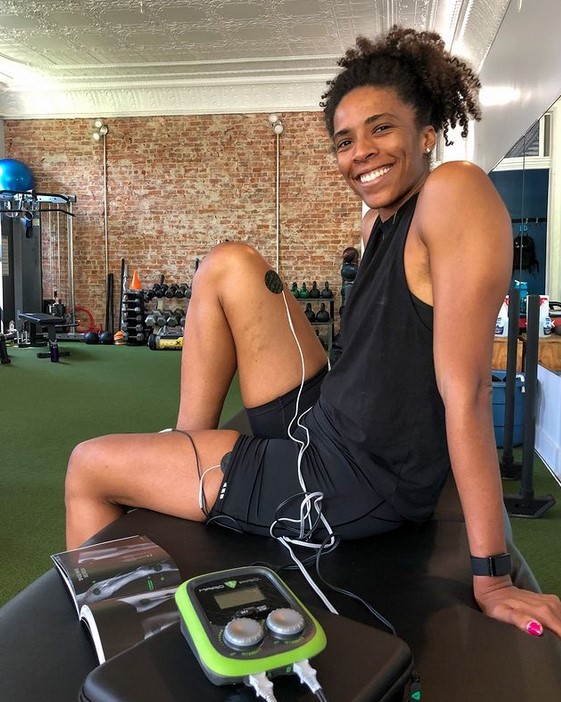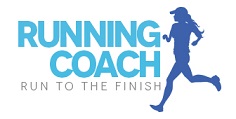Electric muscle stimulation (EMS) has long been popular as a recovery tool, but is creating a new buzz around the potential for muscle growth. How effective is EMS for muscle growth? Here’s a guide to help you determine if the results live up to the hype and often the price tag.
The marketing we’re being sold is that in a 20 minute workout you can get the results of 4 hours with an EMS workout suit. Or for years we’ve seen small devices you can place on your abdomen to get a six-pack without doing any sit ups!
Coach Amanda was super curious about this new technology and has spent a few months adding workouts in the Katalyst suit to her routine. She’ll dive in to a separate review of that later, but wanted to first give you an idea of WHY people are willing to pay $2,000 for this piece of equipment.
Let’s talk more about EMS training from the often promoted EMS recovery tools to the new full body EMS suits for workouts. It’s important to understand how they work and what that could mean for you.
What Does EMS Do For Muscles?
Electrical Muscle Stimulation (EMS), also called neuromuscular electrical stimulation (NMES) or electromyostimulation, uses electrical impulses to directly stimulate motor neurons, causing muscle contractions.
This machine whether it’s small pads, or a fully body suit, induces muscle contractions that can be rapid and frequent, quick with long pauses, or sustained for several seconds or minutes.
Normally, your body triggers muscle contractions by sending electrical impulses from your brain through your central nervous system (CNS). However, an EMS device allows for deep, intense, and complete muscle contractions without engaging (or stressing) your CNS, joints, or tendons.
Interestingly, your body cannot distinguish between a voluntary contraction and one induced by electrical stimulation. It simply recognizes the stimulus and reacts accordingly, which is why there’s excitement around EMS for muscle growth.
Does EMS Actually Build Muscle?
Electromyostimulation training works is proposed to help muscle growth by contracting muscle fibers and creating tiny tears. That’s exactly what happens when you lift weights in the gym.
So, how effective are consistent EMS sessions for building muscle? Experts say you’ll see a 1% increase in muscle mass after five or six weeks of therapy. Your muscles should see a 10%-15% increase in muscle function with the same consistency.
BUT, it’s not more effective than strength training according to a 2022 study. So it’s really something to consider as an add-on or for those who might struggle with strength training due to other limitations.

While EMS focuses on muscle growth, experts have also found its role in reducing muscular atrophy. This condition occurs when muscle tissue begins decreasing.
Muscle atrophy primarily occurs in older adults but can start as early as 30 in some cases (general muscle loss starts for everyone in their 30’s). Research has demonstrated EMS’ role in helping critically ill patients with muscle atrophy. A 2020 Critical Care Medicine study found EMS prevented upper and lower limb atrophy and shortened hospital stays.
Frequency Appears to Be a Key Element of Success
A 2023 PeerJ Life and Environment study examined two groups of young men and women. The eight-week plan tested strength, power and body composition. Half the participants used EMS after their resistance training workouts. The scientists discovered daily EMS treatment significantly improved muscle mass. Simultaneously, the treatment reduced body fat percentages.
The 2023 Medicine investigation used a similar eight-week training program. However, the superimposed EMS group received the treatment thrice weekly instead of daily doses.
This group found more contracted muscle thickness but did not gain an advantage with its resting muscle thickness. You also did not see a difference between physical performance or body composition, emphasizing the need for more frequent EMS treatment.
What About EMS Training For Building Strength?
A study in the Journal of Strength and Conditioning reviewed 89 trials and compared elite athletes to the untrained and found across all that after 3-6 weeks there was an increase in maximal strength, speed strength and power.
The results “the analysis shows that trained and elite athletes, despite their already high level of fitness, are able to significantly enhance their level of strength to same extent as is possible with untrained subjects.”
So again the studies are showing us promising results, but thus far for those with the ability and access to utilize weights it’s not proving to be BETTER than standard strength training.
Does EMS Burn Fat? Does EMS Tone Muscles?
All right, we’ve seen some benefits, but what about for reducing fat? Research has provided mixed results.
A 2021 Chonnam Medical Journal study found whole-body (WB) EMS decreased body circumferences and improved muscle strength for the participants. An older 2015 study, had women place electrodes on their abdomen 3 times per week for 6 weeks and they did have a reduction in subcutaneous fat and waist circumference!
When it comes to muscle toning, that’s really just a short way to say build muscle and lose fat so that muscles become more visible. So yes it’s possible that EMS could tone muscles.
And still, more research has supported the use of EMS to reduce body fat.
However, others aren’t convinced and state EMS is ineffective for fat loss.
A 2020 Lasers in Surgery and Medicine study examined EMS and how adipose tissue responded to it compared to cryolipolysis treatment. The researchers found EMS treatments do not injure fat cells or produce an inflammatory response. While some muscle changes may occur, there were no injury-related activities with subcutaneous fat.
So it’s not going to burn calories, it’s not actually killing off fat cells, what it might be doing is helping to stimulate and build muscle which could help with a reduction in body fat.
Who Will Benefit from EMS Training?
Having tested a suit myself and digging in to the research, I’m going to say at the current price tag it’s something that I’d recommend for a specific set of people. Let’s look at who is really going to get the most out of EMS for muscle growth.
Joint Safety
For those who are running with arthritis, this might be a big win.
If joint pain has limited some strength work, then this is a way to keep stressing the body without creating extra inflammation in and around the joints.
A 2005 study, backed up this idea. “These results demonstrate that this form of EMS is capable of producing a physiological response consistent with cardiovascular exercise at mild to moderate intensities. It achieves this without producing gross movement of the limbs or loading of the joints.”
Ongoing Illness or Injury Limiting Physicality
A 2021 Journal of Rehabilitation Medicine study found NMES could benefit patients with COVID-19 or long COVID. The researchers said NMES assists patients when muscle contraction is difficult because it sends pulses to the body. Using NMES treatments, you can wean patients from ventilators and use this method in long-term recovery phases.
Another 2020 study from the International Conference on Nanotechnologies and Biomedical Engineering found EMS helped patients with cervical spine pain and increased their muscle strength. With this treatment, the patients could relieve their neck pain without medication and embrace natural approaches.
Those Seeking Another Recovery Method
One of the ways I first introduce EMS to all of you was through a comparison of TENS vs EMS for recovery. These are tools that have long been utilized by physical therapists and with at home tools available.
An EMS for recovery is using a lighter pulse with the goal

While EMS has advantages, it’s not necessarily better than classic muscle-building workouts.
Have more questions about EMS for muscle growth? I’m hoping this article helped to break through some of the marketing out there to give you more information.
Looking for more training tips?
This article was written in collaboration with Beth Rush, Managing Editor of Body+Mind. She is a well-respected writer in the personal wellness space and shares knowledge on a variety of topics related to nutrition, fitness, holistic health and disease prevention.
Other ways to connect with Amanda
Instagram Daily Fun: RunToTheFinish
Facebook Community Chatter: RunToTheFinish
Sign Up to Receive a Weekly Newsletter with Top Running Tips and Laughs

